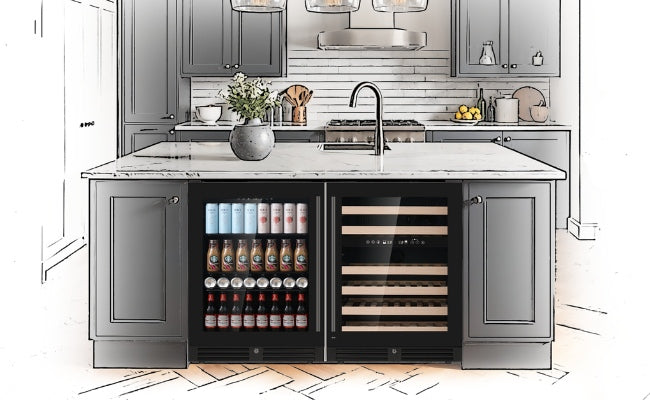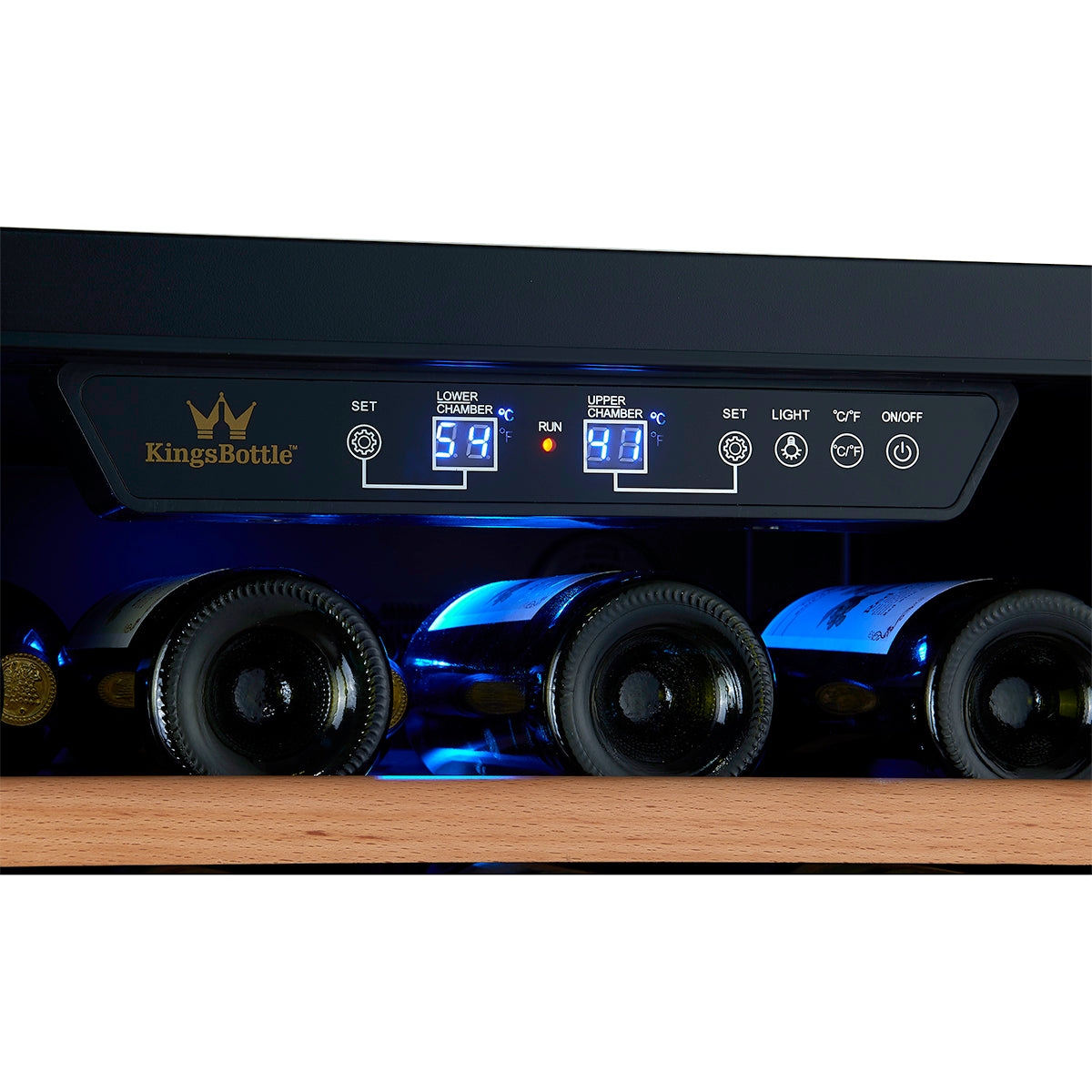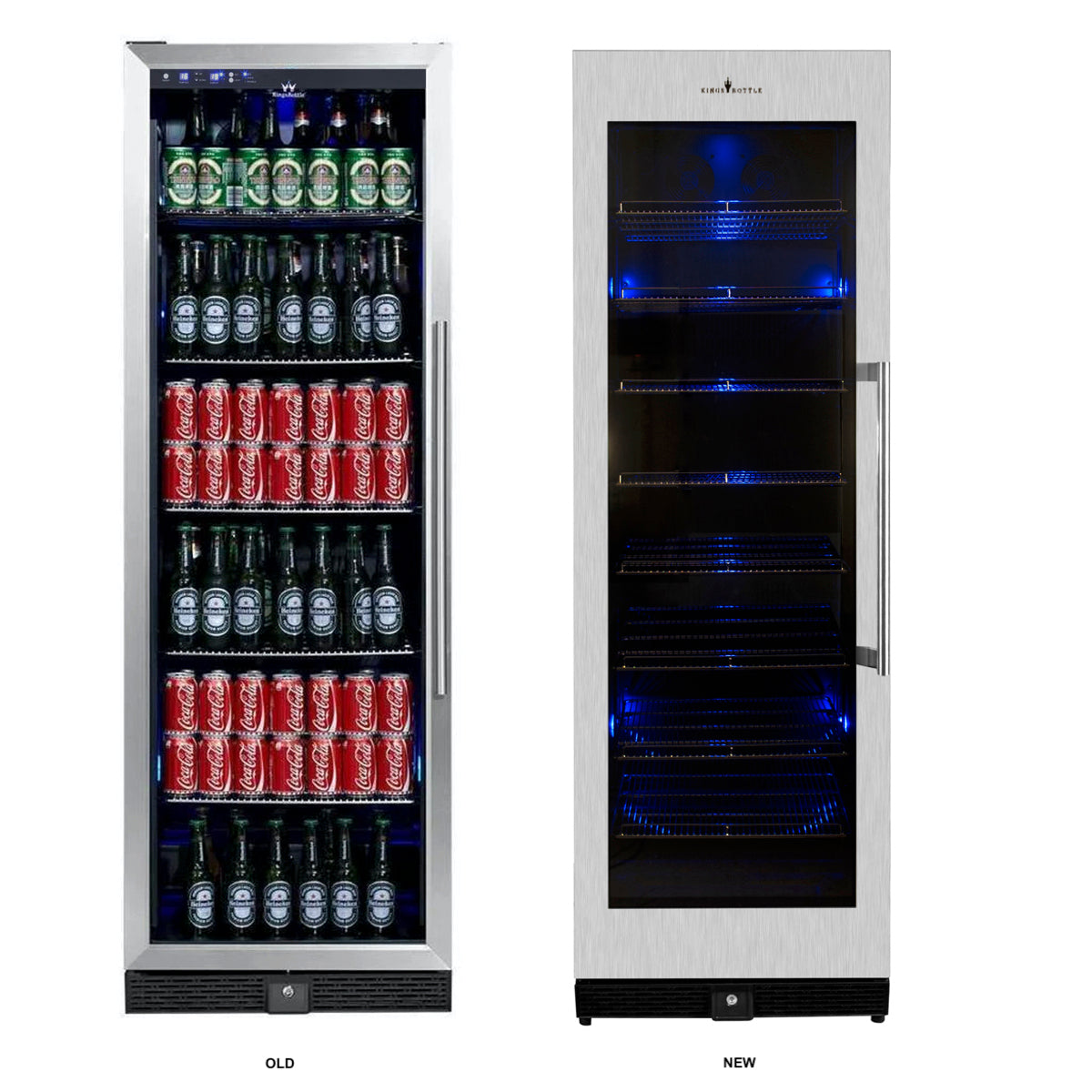
Does a Wine Fridge Need Ventilation?
Wine enthusiasts understand the importance of proper storage conditions to preserve the quality and flavor of their favorite wines. When it comes to wine fridges, there is often a question surrounding the need for ventilation. In this blog post, we will delve into the topic of wine fridge ventilation, exploring its significance, the reasons behind it, and how it impacts the performance and longevity of your prized wine collection. Let's uncover the truth about ventilation and its role in maintaining optimal conditions for your wine fridge.
Understanding Ventilation
Ventilation in wine fridges refers to the circulation of air within and around the unit. It involves the exchange of fresh air and the removal of excess heat, ensuring a stable and controlled environment for your wines. Proper ventilation helps maintain consistent temperatures, controls humidity levels, prevents odors, and enhances the overall performance of your wine fridge.
Reasons Why Wine Fridges Need Ventilation
Heat Dissipation
Wine fridges generate heat as they work to maintain the desired temperature inside the unit. Without proper ventilation, the accumulated heat can affect the cooling efficiency and lead to temperature fluctuations. Adequate airflow allows the heat to dissipate, preventing the compressor from overworking and ensuring stable temperature conditions for your wines.
Condensation Control
Condensation is a natural occurrence when warm air comes into contact with a cold surface, such as the interior walls of a wine fridge. Proper ventilation helps control condensation by facilitating the movement of moist air out of the unit. This prevents excessive humidity levels, which can potentially damage labels, affect cork integrity, and promote the growth of mold or mildew.
Odor Prevention
Wine is highly sensitive to odors and can easily absorb them, which can negatively impact its aroma and taste. Ventilation helps to eliminate or minimize odors by allowing fresh air to circulate within the wine fridge. This reduces the risk of cross-contamination between different bottles and ensures that each wine maintains its distinct characteristics.
Compressor Efficiency
The compressor is a crucial component of a wine fridge, responsible for cooling the internal environment. Adequate ventilation ensures that the compressor operates efficiently by maintaining a consistent airflow. Improved compressor efficiency not only enhances cooling performance but also extends the lifespan of the unit.
Tips for Ensuring Proper Ventilation
- Placement: When positioning your wine fridge, ensure that there is sufficient space around it for airflow. Leave a few inches of clearance on all sides to allow for proper ventilation.
- Avoid Enclosed Spaces: Avoid placing the wine fridge in enclosed cabinets or tight spaces that restrict airflow. Lack of ventilation can lead to heat buildup and affect the performance of the unit.
- Clean the Vents: Regularly clean the vents and air filters of your wine fridge to remove dust and debris. Clogged vents can impede airflow, reducing ventilation efficiency.
- Room Temperature: Place your wine fridge in a room with a stable temperature. Extreme temperature fluctuations in the surrounding environment can impact the performance of the unit.
Understanding the Benefits of Ventilation for Wine Fridges
Wine enthusiasts know that proper storage conditions are essential for preserving the quality and taste of their prized wine collection. While temperature and humidity control are often the primary focus, one crucial element that should not be overlooked is ventilation. Let’s explore the benefits of ventilation for wine fridges, shedding light on its importance in maintaining optimal storage conditions and enhancing the overall wine preservation experience.
Temperature Regulation
Ventilation plays a key role in temperature regulation within a wine fridge. By allowing air to circulate, ventilation helps distribute cold air evenly, preventing temperature variations within the unit. This ensures that each bottle is exposed to consistent cooling, maintaining the desired temperature for ideal wine storage. Proper temperature regulation facilitated by ventilation helps wines age gracefully and preserve their flavors and aromas.
Moisture Control
Controlling moisture levels is vital for maintaining the quality of wine. Without proper ventilation, excess humidity can build up inside the wine fridge, leading to the growth of mold or mildew, and potentially damaging labels or cork integrity. Ventilation facilitates the exchange of air, removing excess moisture and preventing the accumulation of condensation. This helps maintain an optimal humidity level within the wine fridge, ensuring the long-term preservation of your wines.
Odor Prevention
Wine is highly susceptible to absorbing odors, which can significantly impact its taste and aroma. Ventilation plays a crucial role in preventing cross-contamination of odors within the wine fridge. By allowing fresh air to circulate, ventilation helps dissipate any lingering smells and prevents them from affecting the flavors and aromas of the wines. This is especially important if you store a variety of wines with distinct characteristics in the same unit.
Energy Efficiency
Proper ventilation enhances the energy efficiency of a wine fridge. When the unit is well-ventilated, the cooling system can operate more efficiently, resulting in less strain on the compressor. The compressor doesn't need to work as hard to maintain the desired temperature, leading to energy savings and a longer lifespan for the appliance. Effective ventilation contributes to reduced energy consumption and ensures that your wine fridge operates at its best.
Preservation of Wine Quality
Ultimately, the benefits of ventilation in wine fridges converge to one crucial aspect: the preservation of wine quality. By regulating temperature, controlling moisture, preventing odors, and improving energy efficiency, ventilation creates an optimal environment for wine storage. It allows your wines to age gracefully, maintain their desired characteristics, and be enjoyed at their best when the time comes to uncork a bottle.
Tips for Optimizing Ventilation:
- Placement: Ensure that your wine fridge is placed in a well-ventilated area with sufficient space around it. Avoid tight or enclosed spaces that restrict airflow.
- Clear Vents: Regularly clean the vents and air filters of your wine fridge to remove dust or debris that may obstruct airflow. This ensures optimal ventilation performance.
- Room Conditions: Keep the room where your wine fridge is located at a stable temperature, free from extreme fluctuations that can affect the fridge's efficiency.
- Proper Airflow: Avoid blocking the vents of the wine fridge with bottles or other objects. Allow air to flow freely within the unit for effective ventilation.








